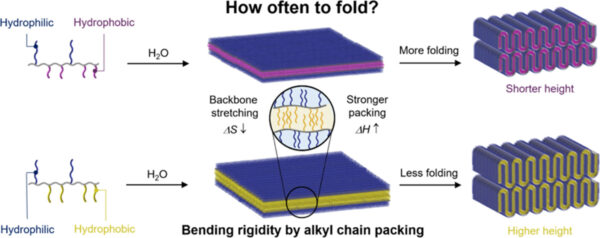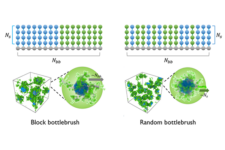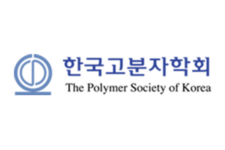Check out our new research article in Macromolecules titled “Tuning of Folding Height in Bilayer-Folded Lamellae by Bending Rigidity Control” by Minjoong Shin, Soon Mo Park, Jimin Yoo, Ahjin Lee, Hyungju Ahn, Dong Ki Yoon, and Myungeun Seo. We teamed up with Dr. Hyungju Ahn at Pohang Accelerator Laboratory and the Dong Ki Yoon group at KAIST in this collaborative research. Minjoong, now in Northwestern University as a postdoc (as of 2024/9/16), led the work as the first author with Jimin and Ahjin as co-authors.

Lipid molecules with hydrophilic heads and hydrophobic tails naturally form bilayer membranes, which separate cells from their surroundings. This process is driven by a balance between interfacial tension and elastic energy. While bilayers are typically rigid due to noncovalent interactions, certain cellular structures like the Golgi apparatus and mitochondria have highly curved membranes thanks to external proteins. Achieving such folded structures in amphiphilic self-assembly has been challenging, but we previously demonstrated that specific amphiphilic random copolymers can form bilayer folded lamellar (Lf) mesophases due to local curvature mismatch, thus avoiding entropic loss caused by chain stretching (see the previous post and the Nature Communications 2022 paper).
This paper presents a method for controlling the folding height of the Lf phase formed by amphiphilic random copolymers in water. We synthesized copolymers with various alkyl chain lengths by combining different alkyl acrylates and oligo(ethylene glycol) acrylates using reversible addition–fragmentation chain transfer (RAFT) polymerization. The folding behavior of the copolymers based on the alkyl chain length was systematically analyzed, with a focus on exploring the relationship between folding height and alkyl chain length.
The results confirmed that as the alkyl chain length increased, the bending rigidity of the bilayer also increased, leading to a higher folding height. Small-angle X-ray scattering (SAXS) confirmed the existence of the Lf phase, and quantitative analysis revealed the phase change according to the alkyl chain length. The scaling exponent in the relationship of the carbon number in the alkyl chain with the folding height (~ Kuhn length ~ bending elasticity) is consistent with that found in bilayer membranes.
This study will allow for manipulation of folding frequency across a wider range, and it will be valuable for creating soft materials with hierarchical structures that can be controlled at different length scales.
You can find the full article at the following link: https://pubs.acs.org/doi/10.1021/acs.macromol.4c00298

